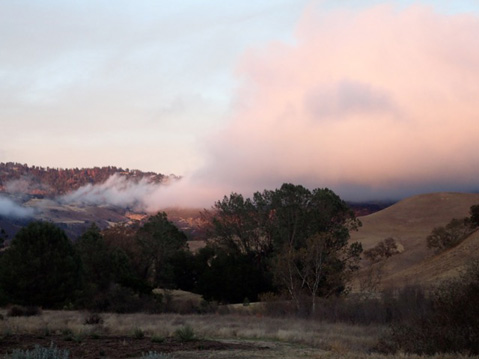Sedgwick Reserve, Then and Now
Profiles in UCSB’s Natural Reserve System

THE PAST: The Chumash lived upon the land now known as the Sedgwick Reserve as early as the 1200s, where they ran hunting encampments, traveled through on trade routes, and dodged the California grizzlies that once reigned among the acorn-shelled chaparral. To this day, the earth continues to yield archaeological reminders of the Chumash presence, as well as their modern-day residence near the city of Santa Ynez. Following the Mexican acquisition of California, the Sedgwick was subsumed within a 48,000-acre Mexican land grant to a retired Mexican army sergeant, Octaviano Gutierrez. This gave way to an American ranching era, with rancher and sculptor Francis “Duke” Sedgwick purchasing the land for himself and his family in 1952. Sedgwick, a dynamic “gentleman cowboy,” was known for the hugely entertaining parties he held for his fellow UC art school staff before he set the land aside upon his death in 1967.
THE PRESENT: The reserve is open on the second Saturday of every month from fall to late spring but attracts only researchers in the prohibitively hot midyear weather. On a recent visit, reserve manager Kate McCurdy was one of only a few souls in the sweltering summer solitude. As we walked among the huge valley oaks, the dry land rolled behind us over the foothills of Figueroa and Zaca mountains, with the unique geology of the Little Pine Fault offering up serpentine for research. The geology is of particular scientific interest for its soil research possibilities, but the Sedgwick is more and more becoming a wild observatory for researchers to witness the effects of climate change. The unprecedented drought has allowed scientists to research native species’ protections against climate change and measure shifting population dynamics and migration patterns. The acorns this year, now a month from harvest, are among the lowest recorded yield of valley oaks ever, and UC scientists are using genetics to genotype valley oak trees to determine why so few young specimens are to be found — the majority are 300-400 years old. Mountain lion sightings, usually an annual guarantee, have also been effectively nonexistent this year, as the large predators have followed the deer toward urban creeks and lawns.
THE FUTURE: Researchers are petitioning to have the Sedgwick classified as a dark-sky preserve. Some of the most exciting research going on is about the night sky, much of it done in the Laurie Nelle Byrne Observatory, the first observatory at a UC reserve. The 32-inch telescope is part of the Las Cumbres Observatory Global Telescope Network, which will allow people around the globe, from astrophysicists, university students, K-12 classes, and Sedgwick visitors alike, to see the telescope’s views of the night sky via Internet connections. The future of this designation, however, is in a tenuous balance, as the increasing light pollution of an ever-populous Santa Ynez Valley could compromise the clear night skies. For now, though, barely a car makes it out onto the gravel, and the only urban sound and sight at night, says McCurdy, is the sound of the telescope turning.



